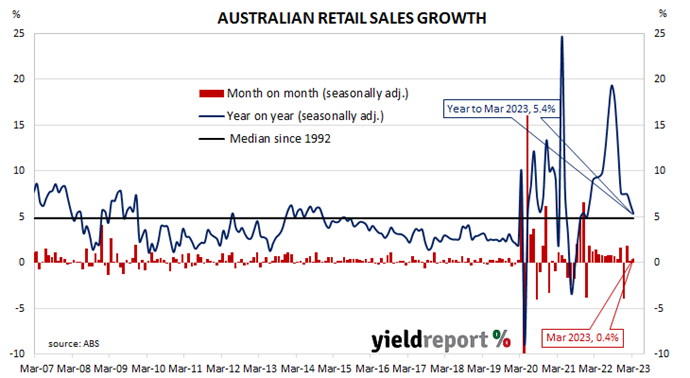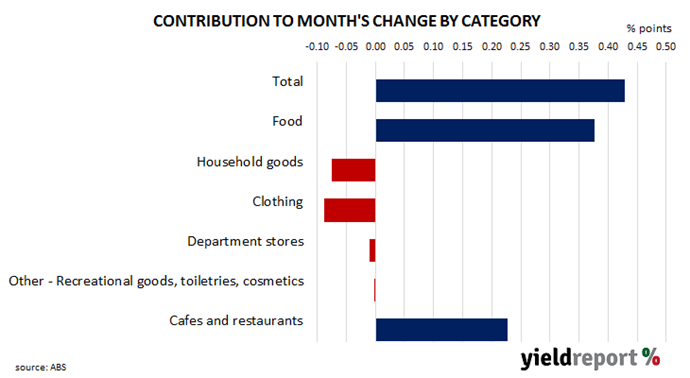Summary: Retail sales up 0.4% in March, above expectations; Westpac: momentum slowing materially; ANZ: expects subdued spending growth this year; largest influence on result from food.
Growth figures of domestic retail sales spent most of the 2010s at levels below the post-1992 average. While economic conditions had been generally favourable, wage growth and inflation rates were low. Expenditures on goods then jumped in the early stages of 2020 as government restrictions severely altered households’ spending habits. Households mostly reverted to their usual patterns as restrictions eased in the latter part of 2020 and throughout 2021.
According to the latest ABS figures, total retail sales rose by 0.4% in March on a seasonally adjusted basis. The rise was above the generally-expected figure of 0.4% as well as February’s 0.2% increase. Sales increased by 5.4% on an annual basis, down from February’s comparable figure of 6.4%.
“The key message continues to be of a material slowing in momentum, flat nominal sales for Q1 as a whole, pointing to a material contraction in real, inflation-adjusted terms,” said Westpac senior economist Matthew Hassan.
Commonwealth Government bond yields moved lower on the day following large falls in US Treasury yields overnight. By the close of business, the 3-year ACGB yield had shed 6bps to 3.11%, the 10-year yield had lost 4bps to 3.41% while the 20-year yield finished 1bp lower at 3.87%.
In the cash futures market, expectations regarding rate cuts in 2024 firmed. At the end of the day, contracts implied the cash rate would remain essentially steady at the current rate of 3.82% to average 3.835% in June and 3.875% in July. February 2024 contracts implied a 3.835% average cash rate while May 2024 contracts implied 3.565%.
“We continue to expect subdued spending growth this year, as high rates and inflation eat into household budgets,” said ANZ economist Madeline Dunk, “though some of the retail sales weakness reflects a shift away from the retail sector into other services.”
Retail sales are typically segmented into six categories (see below), with the “Food” segment accounting for nearly 40% of total sales. The largest influence on the month’s total came from this category where sales increased by 1.0% on average over the month and accounted for 0.38 percentage points of the net result.



